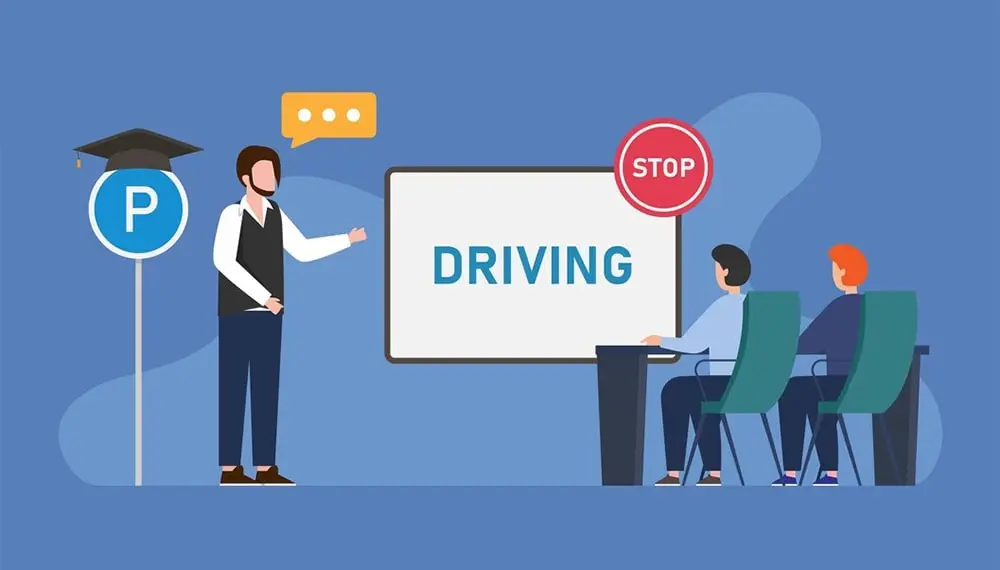5-Step Guide to Designing Effective Learning Paths
Rohit Kumar
13 Jul, 2023

Imagine embarking on the journey of building a house. You wouldn't randomly purchase materials, hire builders, and start construction without a plan. Instead, you'd first lay out a detailed blueprint, outlining each step, from laying the foundation to installing windows and doors and painting the walls. This systematic approach ensures that the construction process is organized, efficient and leads to a sturdy, well-built house.
Similarly, when it comes to training employees in a corporate setting, a structured, systematic approach is of paramount importance. This is where the concept of 'learning paths' comes into play. A learning path serves as the blueprint for your training program, providing a clear and organized route for the learning journey. This piece will help you understand and create an effective learning path, ensuring a structured and efficient learning experience for your employees.
Understanding Learning Paths
Before diving into the creation process, it's essential to understand what a learning path is. A learning path, or a learning track or pathway, is a structured route learners follow in a training program. It allows you to organize various courses logically, breaking down the learning process into manageable parts.
Think of it as a roadmap for learning, complete with milestones that lead to the desired learning outcomes. Each milestone represents a specific course or module the learner needs to complete. As they progress through the learning path, they gradually build up their knowledge and skills, eventually reaching the final destination - the main learning goal.
Learning paths are beneficial in the context of corporate training. They enable organizations to efficiently onboard new employees, ensuring they quickly get up to speed with their roles and responsibilities. For existing staff, learning paths provide a structured way to upgrade their skills, expand their knowledge, and prepare for new roles or responsibilities.
The Benefits of Implementing Learning Paths
Learning paths can transform a potentially confusing and overwhelming training program into a constructive, engaging, and effective learning experience. They offer several key benefits:
- 1.Design a structured training program: Instead of assigning a plethora of unrelated courses, a learning path allows you to create a clear and organized path for learning. You can control the sequence in which courses are assigned and the timeframes within which they are available. This ensures that learners progress through the training program in a logical and structured manner.
- 2.Reach goals quicker: A learning path is designed with a main goal in mind, then divided into smaller, more manageable objectives. Each of these objectives is tied to a specific course or module. As learners complete these courses or modules, they gradually achieve the smaller objectives, bringing them closer to the main goal. This step-by-step approach gives learners a clear understanding of the steps they must take to reach the final destination, enabling them to progress more quickly and efficiently.
- 3.Save time: Enrolling learners in each course separately can be time-consuming. With a learning path, you can set up the entire sequence of courses once and let your learners navigate it independently. After finishing one course, they'll automatically be enrolled in the next, and so on, until they complete the entire path. This saves time and ensures a smooth and uninterrupted learning experience.
Creating a Learning Path: A Step-by-Step Guide
Now that we've covered a learning path and its benefits let's delve into creating one. Here's a step-by-step guide:
Step 1: Conduct a thorough analysis
The first step in creating a learning path is to conduct a comprehensive analysis. This involves understanding your target audience, their current competency level, and the learning gaps that must be addressed. You need to define who you are going to train clearly. Are they newcomers from various departments, the sales team, or managers and team leaders? Understanding your audience's strengths and weaknesses will help you decide what content the training program should include. For instance, you may find that newly-appointed managers lack the necessary skills to organize teamwork or communicate effectively.
Once you've analyzed your audience and identified their learning gaps, you need to define the main goal of the learning path. This goal should be based on your audience's knowledge and skill gaps. Then, break down this main goal into smaller, more manageable objectives. These objectives should clearly define what employees need to know and be able to do once they complete the training.
Step 2: Create milestones
The next step is to create milestones for your learning path. This involves dividing the learning path into related courses and lessons, keeping the objectives in mind. The brain is designed to remember information better when organized and divided into smaller pieces. Therefore, it's important to structure your learning path to align with this natural learning process.
Arrange the courses from simple to complex to create a logical sequence of learning topics. Each course should build on the previous one, gradually increasing in complexity as learners progress through the learning path. The milestones should be interconnected and ordered about each other. This results in a logical sequence of learning topics, making the learning journey smooth and enjoyable.
Step 3: Prepare the learning content
Once you've outlined your learning path and defined the milestones, it's time to gather and prepare the learning content. This could include video lectures, guides, podcasts, documents, and other learning materials.
Several options are available if you don't have enough content to meet your training goals. You can purchase ready-made courses online, outsource training development to third parties, or create courses in-house. Several authoring tools, such as Core Competency LMS, allow you to create interactive courses, even without design or tech skills.
Step 4: Create a learning path in your LMS
After you've prepared all the necessary content, the next step is to build your learning path in your LMS. An LMS like Core Competency LMS is an online platform that allows you to create, deliver, and monitor online training in one place.
In your LMS, you can connect all the files, guides, video lectures, and assessments to the related courses. This creates a structured, organized learning path that learners can follow. Depending on the features of your LMS, you can schedule when each course will be available, control the order in which learners take the courses, and track learners' progress through the learning path.
Step 5: Evaluate progress
The final step in creating a learning path is to evaluate progress. After implementing the learning path in your LMS, monitoring how learners progress is important. Use assessments to determine if the learning path was effective and helped your learners achieve their goals.
Collect feedback from learners to understand their experience with the learning path. This feedback can provide valuable insights into improving the learning path. For instance, learners may suggest adding more interactive elements, providing additional resources, or adjusting the pace of the learning path.
A learning path vs. a course
A course is a single unit of learning that provides focused knowledge on a specific topic. On the other hand, a learning path is a sequence of related courses that offer a comprehensive and coherent learning experience. While a course focuses on a specific topic, a learning path covers a broader theme or skill set, offering a more holistic view.
For instance, a course might teach you how to use a specific software tool, while a learning path might cover all the skills needed to become a proficient software developer. This might include courses on various software tools, programming languages, project management techniques, and more.
A learning path provides a more comprehensive and in-depth learning experience, guiding learners through a series of related courses that build on each other to achieve a larger learning goal.
In conclusion, learning paths are a powerful tool for structuring and delivering training programs. They provide a clear, organized route for the learning journey, breaking down complex learning goals into manageable steps. By implementing learning paths in your training program, you can create a more engaging, effective, and efficient learning experience for your employees. Whether onboarding new employees or upskilling existing staff, learning paths can help you achieve your training goals more quickly and efficiently.




